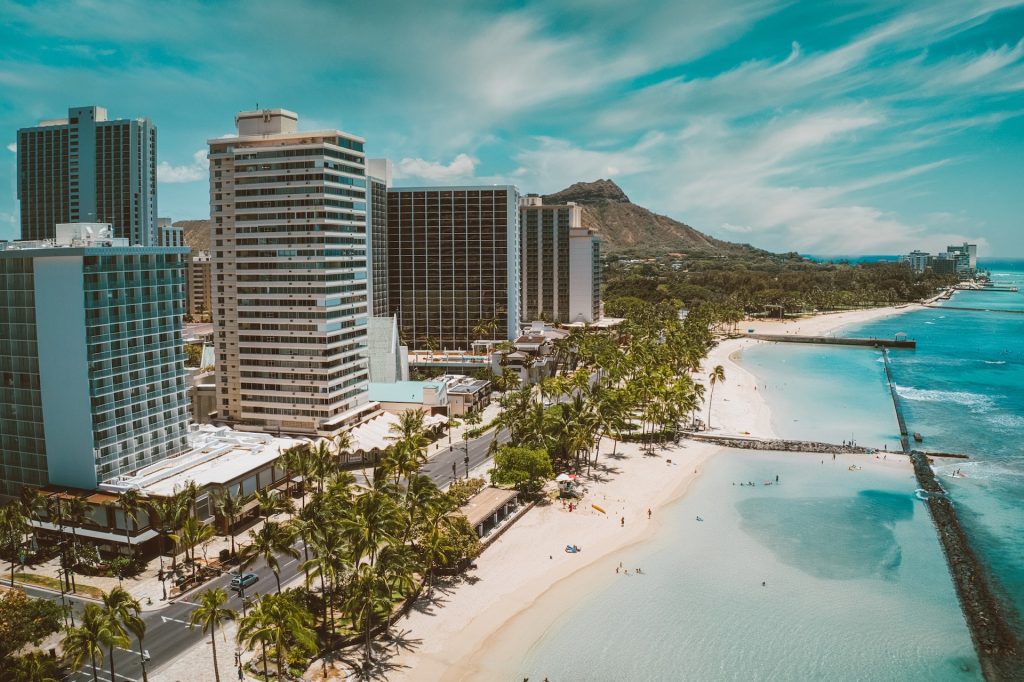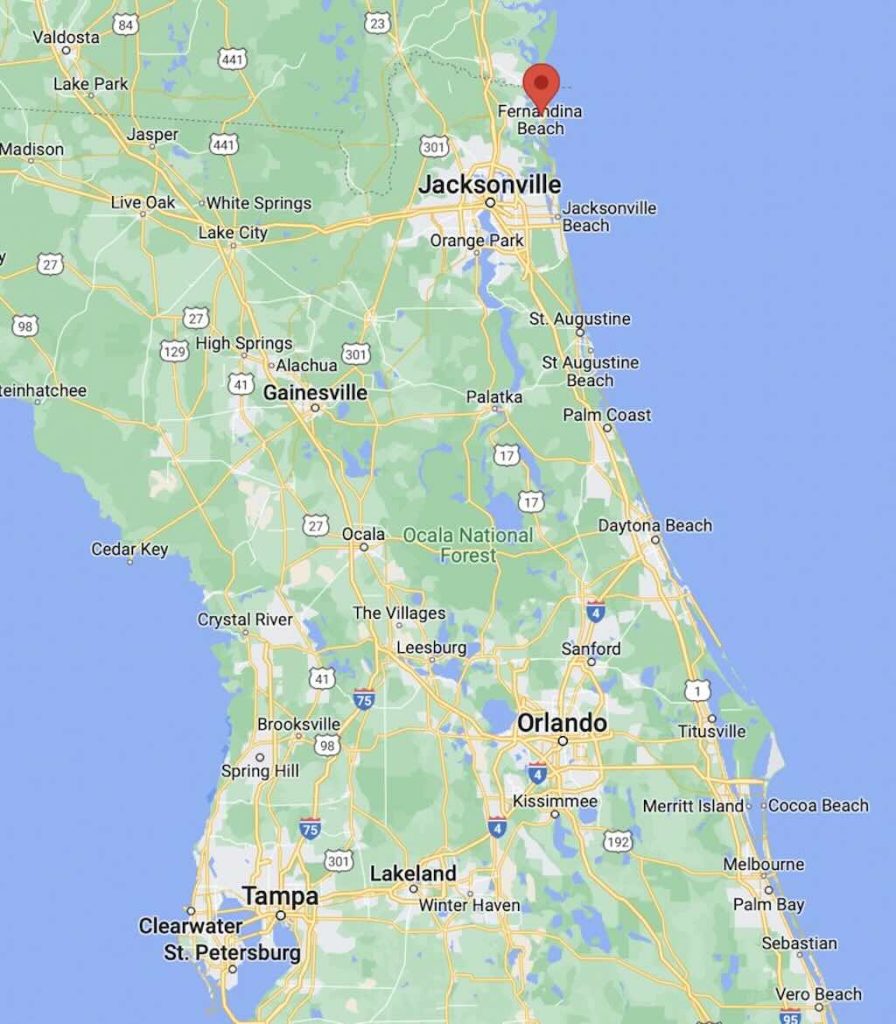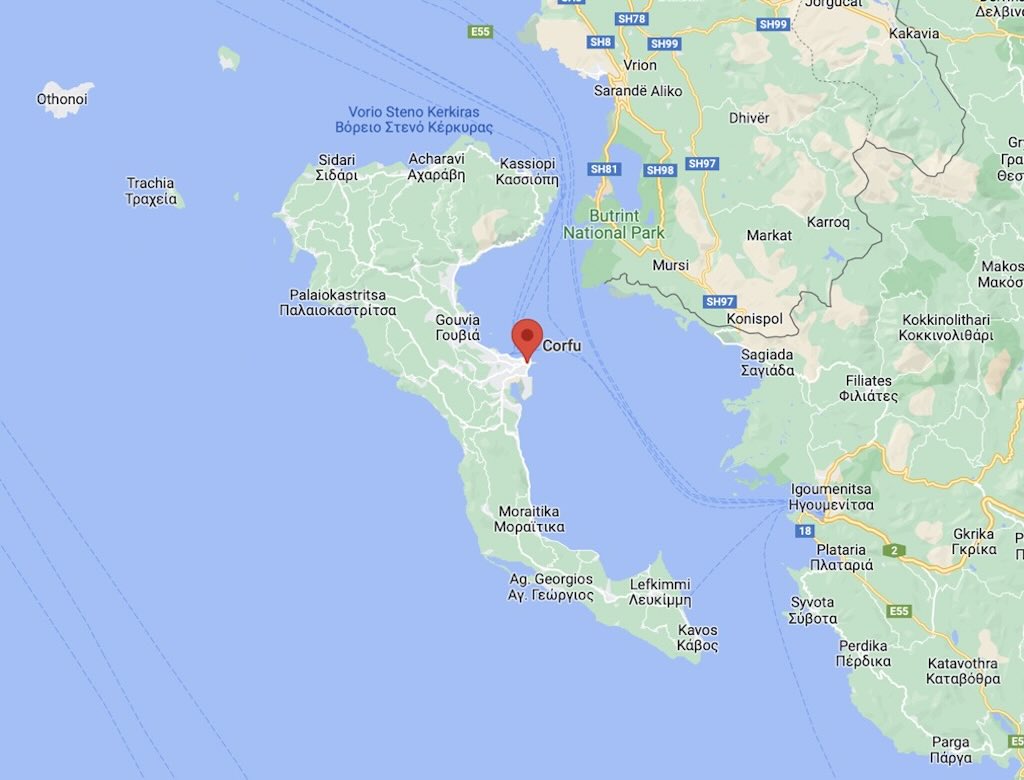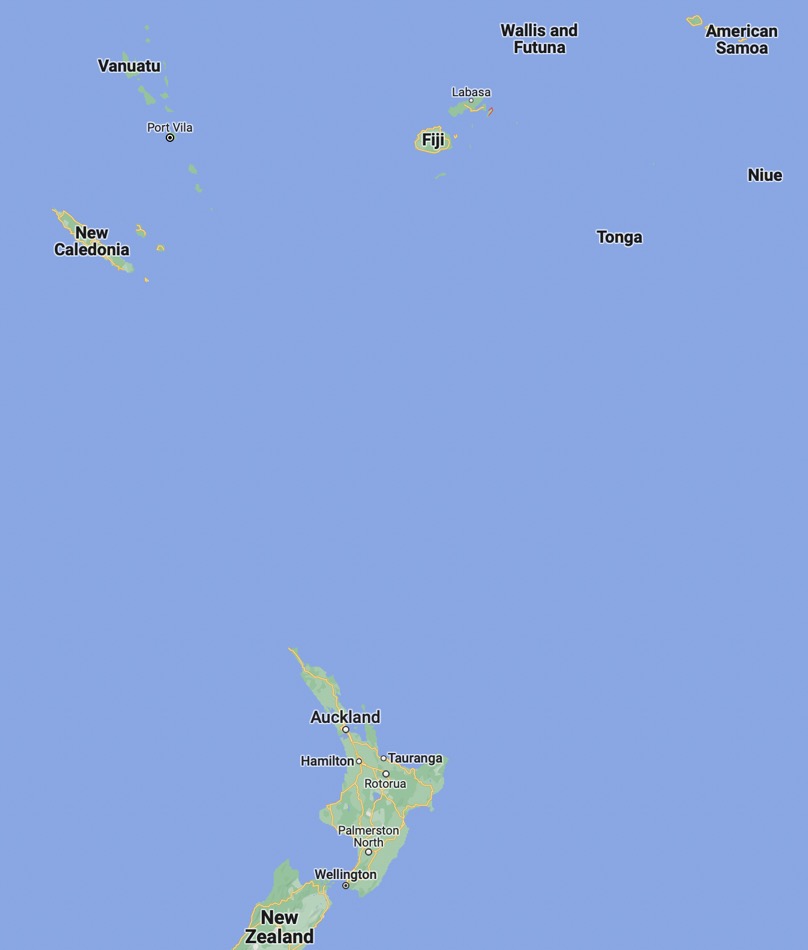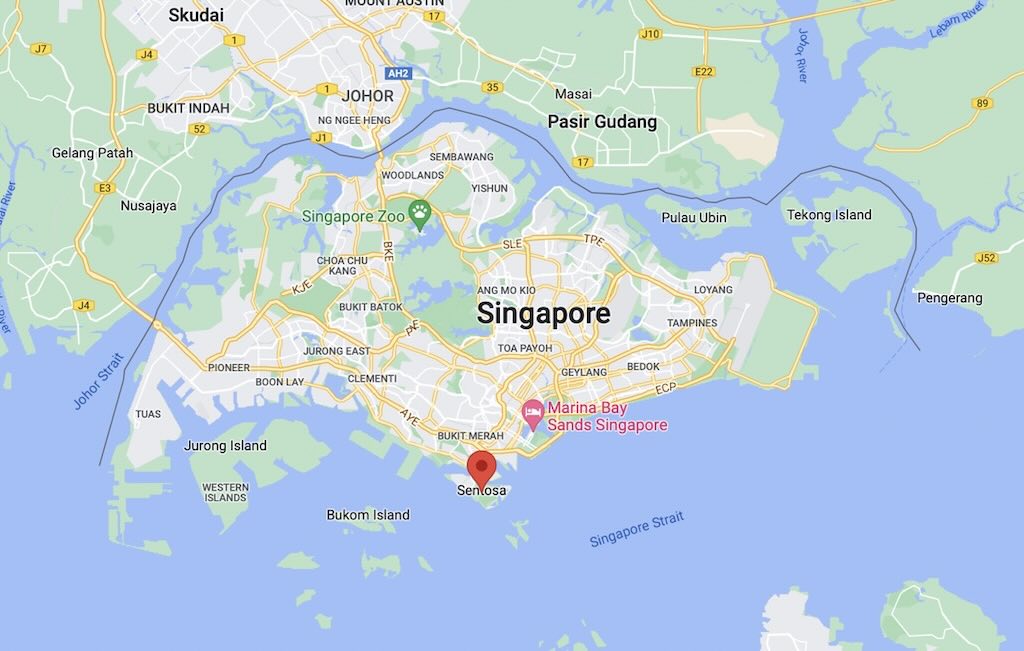As one website put it “after two hundred years of works and projects, four centuries of use and two reigning dynasties, the Palace of the Austrias and Bourbons has found a new destination as a museum of itself“. However, it is still also one of the official residences of the Spanish royal family.
The Austrias was the old Spanish name used for the Habsburg Dynasty. The House of Bourbon was a dynasty that originated in the Kingdom of France as a branch of the Capetian dynasty.
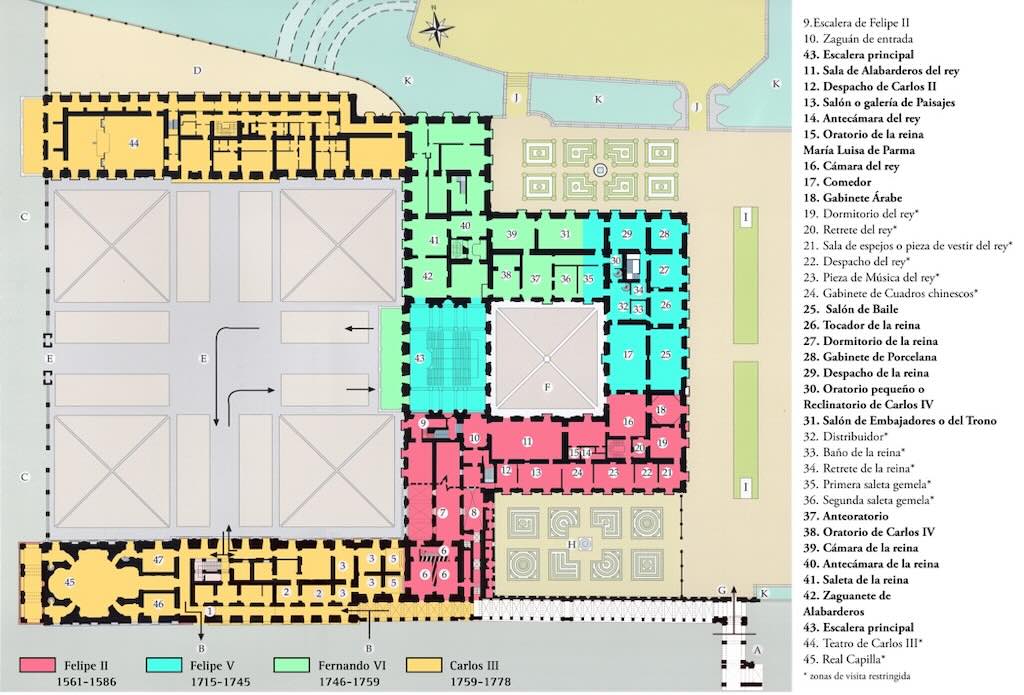
Above we have the plan of the palacio as a visitor or tourist would see it.
The visit starts when you walk across the ‘Plaza de las Parejas‘ towards the south side (right wing) of the palacio. This is home to the security checks, ticket office, and shop (I think rooms no.1 through no.5 on the map). Walking through the open arches seen below, the entrance is in the building on the left. I have read that the name ‘las Parejas‘ comes from the equestrian shows held there by the nobility, and in which the parades were by pairs.
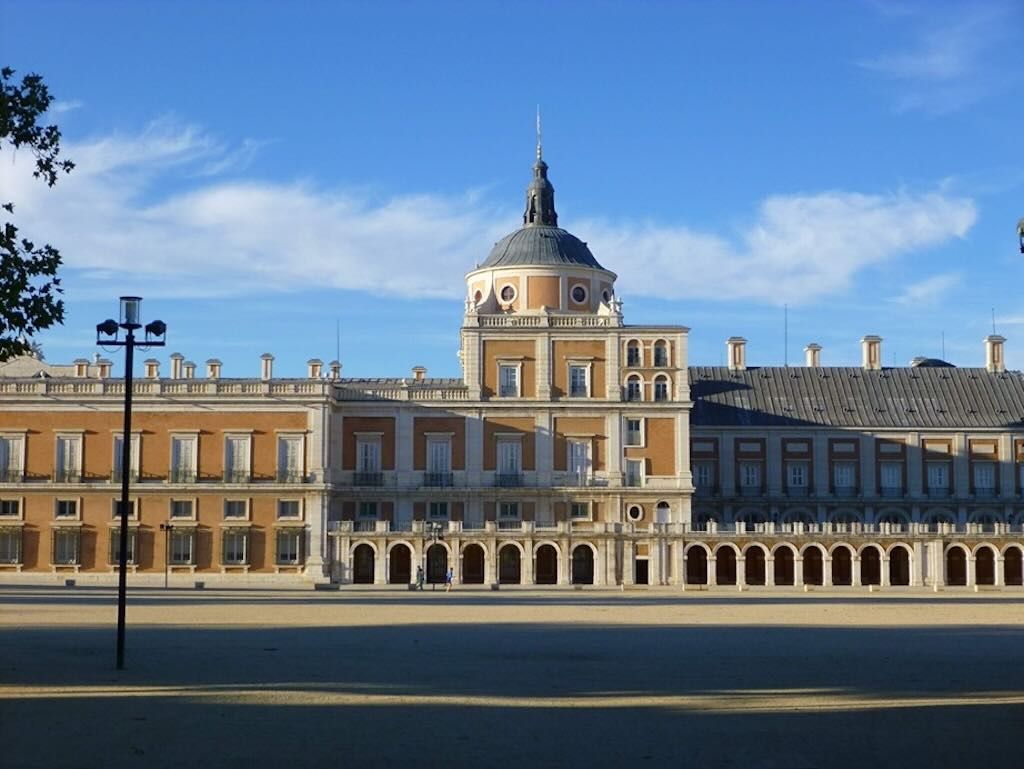
With your ticket you walk out into the ‘patio de honor‘ or ‘Patio de Armes’, and the main entrance is through the door on the right of the main façade. As a reminder it was Francesco Sabatini (1722-1797) who was ordered to enlarge the palacio with the two additional wings, largely for practical reasons. Carlos III needed more space for the great number of courtiers that followed the royal movements from palacio to palacio. He thus created the vast ‘patio de honor‘, even if the iron fence closing the patio, as originally imagined by Sabatini, was only added in 1974.
A courtier was someone who served as an attendant or assistant to a member of a royal family.

The main entrance created by Santiago Bonavía, was later extended forward by Sabatini.
Almost the entire main floor of the central part of the building is open to the public. The rooms follow a logical continuity and there are around 32 rooms that are open to the public, and the visit ends back at the main staircase. The rooms are all fully furnished and decorated, and the most interesting (according to tour operators) are the dining room, the ballroom and when it comes to the decoration, the Arab room and the porcelain room.
Escalera de Honor
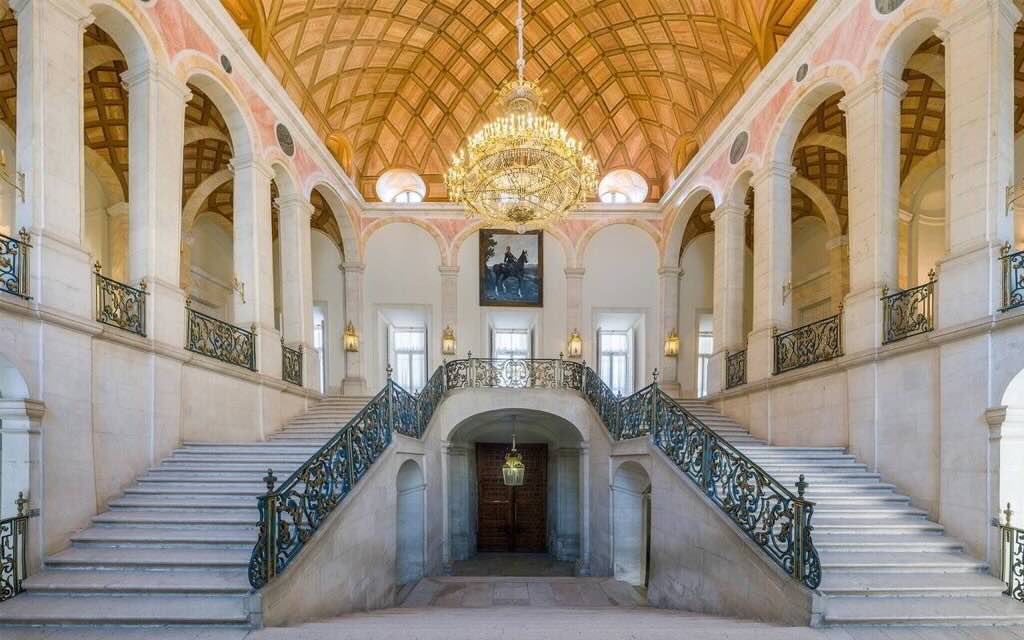
So visit starts and ends with the main staircase (escalera principal or better still Escalera de Honor) by Bonavia. This Baroque-style imperial staircase was built with white stone from nearby Colmenar de Oreja, and was finished in 1745. The handrails are made of black iron with golden ornaments and are typical of the Rococo style that was popular at that time. From the ceiling hangs a large chandelier of gilded bronze and glass from La Granja, modelled in the later Empire style.
The entrance is in fact the most monumental room in the palacio. Bonavia had inherited a design from the architect Pedro Caro Idrogo, but he decided to build it wider and higher than originally planned. The staircase was finished in 1745, but the roof decoration was never finished. In 1851 Isabel II (1830-1904), who was the last to actually live in the Royal Palace of Aranjuez, inaugurated the third railway line in Spain, connecting Madrid and Aranjuez. On the day of the inauguration, the locomotive and the convoy carrying the Queen and her entourage arrived directly at the palace lobby, below the main staircase. The last rails of the line were made of silver. That same year, the sovereign ordered the decoration of the main staircase with trompe l’oeil, in the style of the train stations of the time. This decoration was plastered over in 1958, because it married badly with the so-called ‘solemnity of Francoism’. It was restored in all its glory in 2008.
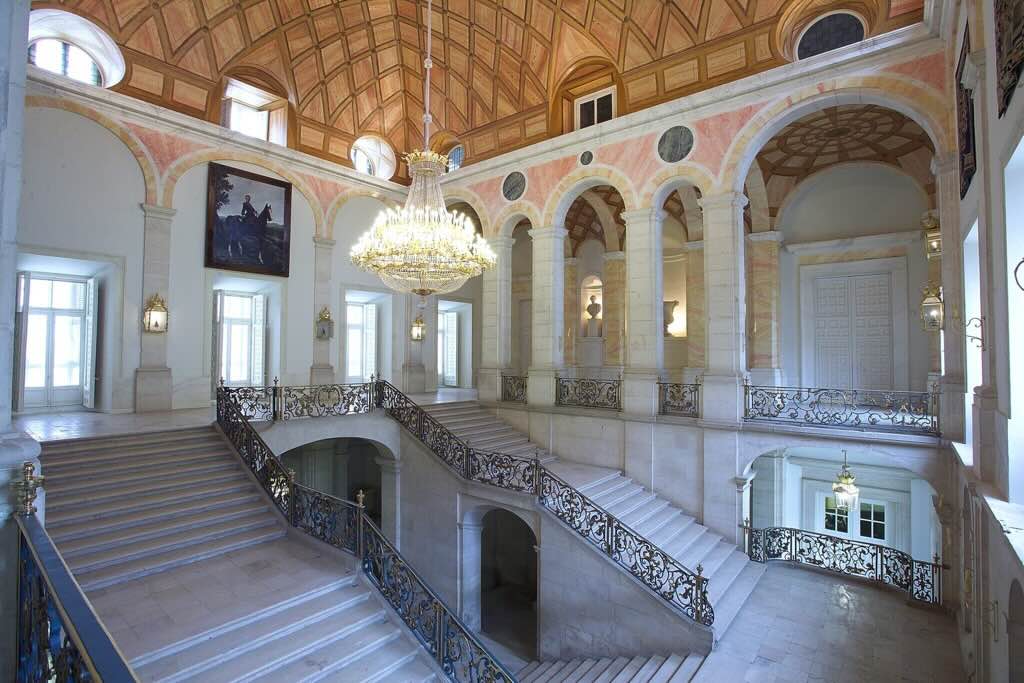
It is interesting to note that the staircase was just one element in the work that Bonavia (Director de las obras reales) had undertaken on the palacio. In 1741 he wrote complaining that it was impossible to ‘keep in check’ 250 stonemasons and other workers, and in particular when some were not ‘men who knew their trade’ (and later he would have 400 men working on the site).
The visit starts
The original interiors of the Habsburg Monarchy of Spain (1516-1700) are really no longer visible. The visit to the Palace of Aranjuez today is, above all, a kind introduction to the art of the Court of the Bourbons in Spain, where the Italian and French styles achieve a certain balance. Although the great porcelain pieces and the ceiling decorations bear an Italian stamp, the French, through the Empire style, dominate the furnishing.
We are going to breakdown our visit into a few ‘easier to handle’ chunks, starting with rooms 11 to 18, in the part often linked with Felipe II. Rooms 19-24 are not part of the normal visit.
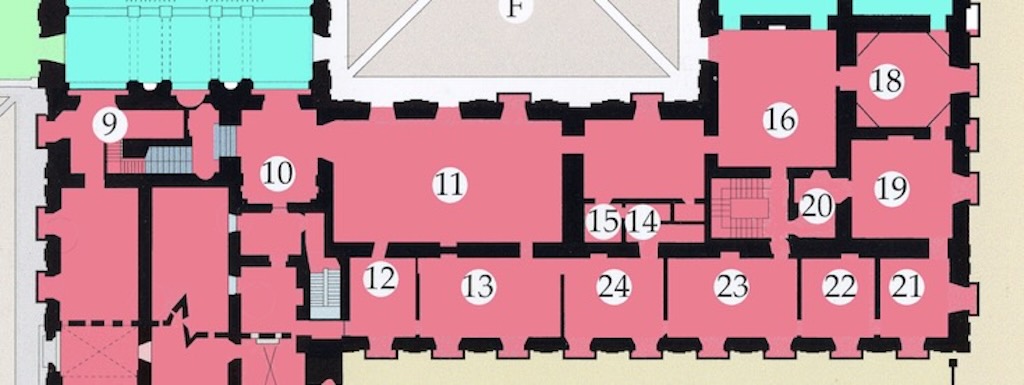
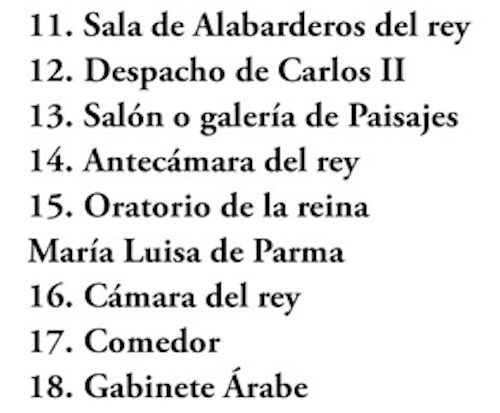
Many of the photographs and lots of the basic descriptive comments are taken from one website called historianenestudio. Visitors are not allowed to take photographs inside the palacio, so I needed to hunt around to find example photographs of each room. And ‘historianenestudio’ had by far the best photographs, and their comments are precise and descriptive. The official websites on the Aranjuez palace are poor, and the descriptions are often overly complex and don’t relate directly to the photographic content.
Sala de Alabarderos del Rey
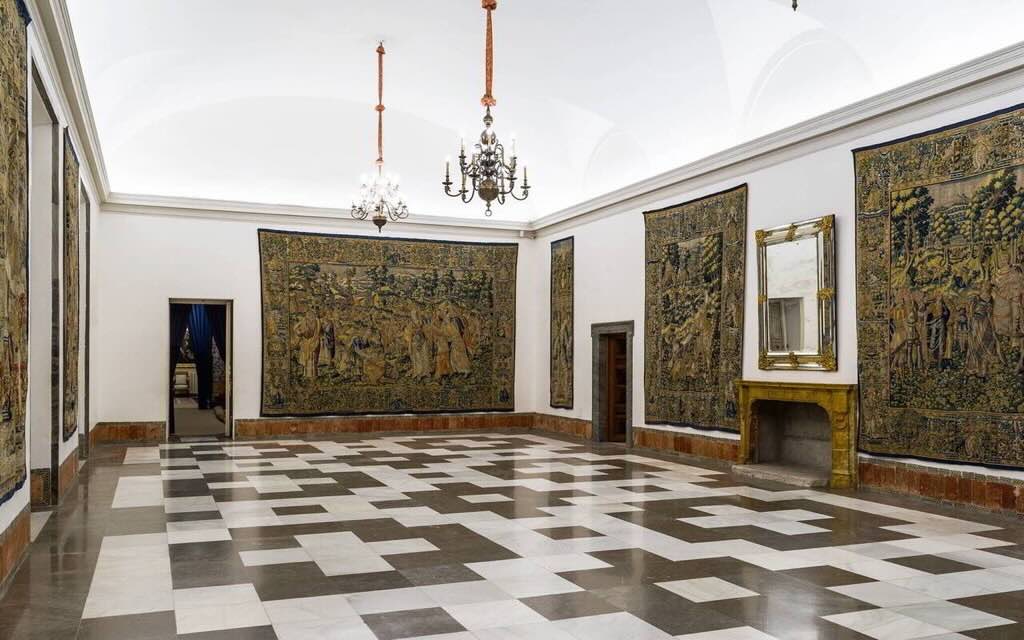
This is the ‘Hall of the King’s Halberdiers’ or the kings personal escort and bodyguards, who were traditionally known by the fact that they used the halberd. This room is one of oldest in the palacio because it dates back to Felipe II (1527-1598). At the time of Felipe V (1683-1746) the room was divided into a room for the kings bodyguard and a small sitting room for the king, however the room was returned to its original purpose in 1960.
Despacho de Carlos II

The ‘Office of Carlos II’ is a small room with views over the King’s Garden. During the reign of Carlos IV (1748-1819) it was a simple wardrobe and it is said that previously it had been walled up by Felipe V. It was the office of the King during the reign of the Habsburg’s during the years 1586-1700. Felipe IV (1605-1665) ordered the decorating of the vault with stuccos. We can still see the stuccos today but without the paintings, since the project was never completed.
This magnificent decoration was commissioned by Velázquez (1599-1660) to the Italian Giovanni Battista Morelli (1617-?). He executed the stuccos in several rooms starting in 1664. What he made were a series of putti (chubby winged boy), festoons (garlands), virtues and boxes designed to contain paintings.
‘Virtues’ were usually a series of girl figures found alongside putti and garlands, etc. The ‘virtues’ could represent a number of different concepts, e.g. the ‘Joyful Mysteries’ of charity, humility, peace, purity, and wisdom, or the ‘Sorrowful Mysteries’ of justice, docility, patience, fortitude, and obedience, or the ‘Glorious Mysteries’ of victory, and generosity.
Others artists took a simpler view with the ‘virtues’ just being charity, hope, faith and strength. And yet others preferred the ‘theological virtues’ of faith, hope and charity, along with the ‘cardinal virtues’ of prudence, justice, strength and temperance.
The stucco wall boxes and frames remained empty until Luca Giordano (1634-1705) arrived in Madrid. He painted the frescoes for Carlos II (1661-1700), and they date from ca. 1697.
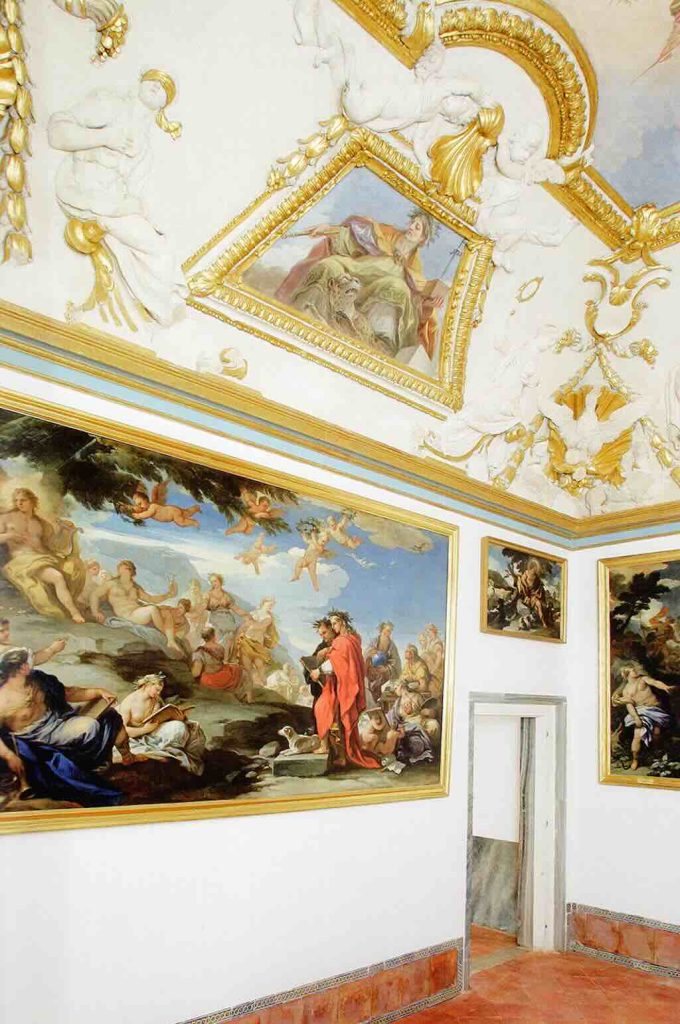
It is interesting that the ceiling we can see here was in fact covered by a false ceiling until the original was re-discovered in 1998. Above we can see both the walls and ceiling. The paintings on the walls were found in the national collection, and are presumed to have come from this room because they are the only ones that had the precise dimensions of the empty stucco frames. For a more complete understanding of the history and significance of this room and it decoration, check out this article on the role of Luca Giordano in Aranjuez.
Salón o galería de Paisajes
We can see that room 19 to 24 are not included in the normal visit to the palacio. At the time of Felipe IV (1605-1665) rooms 13 and 22, 23, and 24 were in fact a ‘Galería de Paisajes‘ that overlooked the ‘Plaza de las Parejas‘, and functioned as an axis between the most important rooms of the king. This article gives us an overview, and this article looks into the decoration in this gallery in more detail. Today this ‘salón‘ or ‘galería‘ is just room 13.
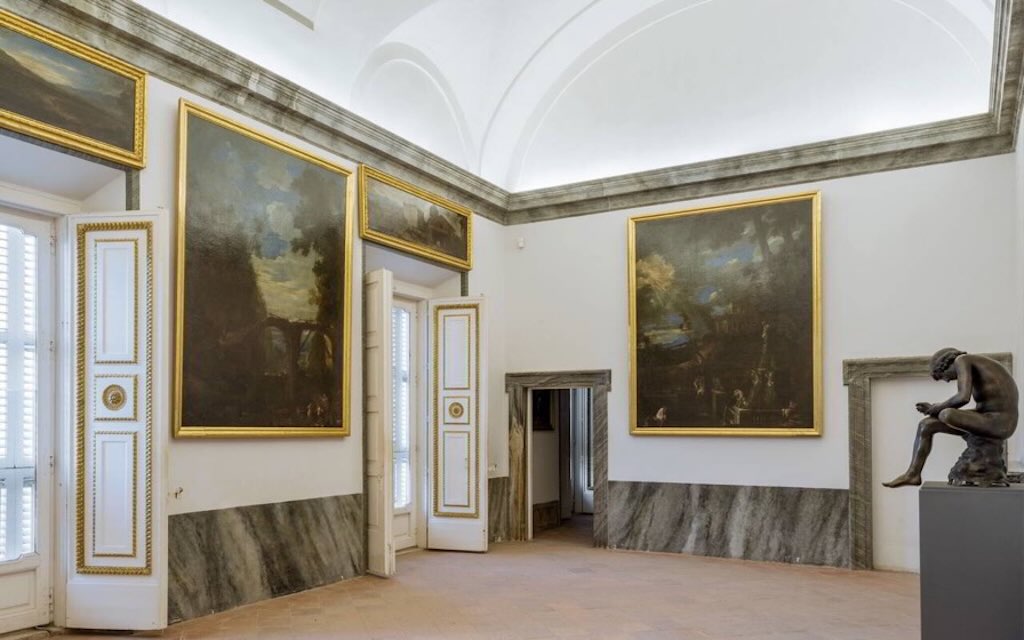
Antecámara del Rey

Antechamber of the King, is the first of the rooms of Don Francisco de Asís (1822-1902), consort to Isabel II (1830-1904). In the antechamber the ushers ordered the visits to the king consort. The ‘damasco‘ blue curtains represent the reign of Isabel II. For their artistic value, the two portraits executed by Anton Raphael Mengs stand out. The first is of the King of Naples, Fernando IV (third son of Carlos III), and the other of his wife Maria Carolina. The wallpaper is of ‘alfonsina‘ or a 19th century decoration inspired by Alfonso XII (1857-1885).
Oratorio del la reina
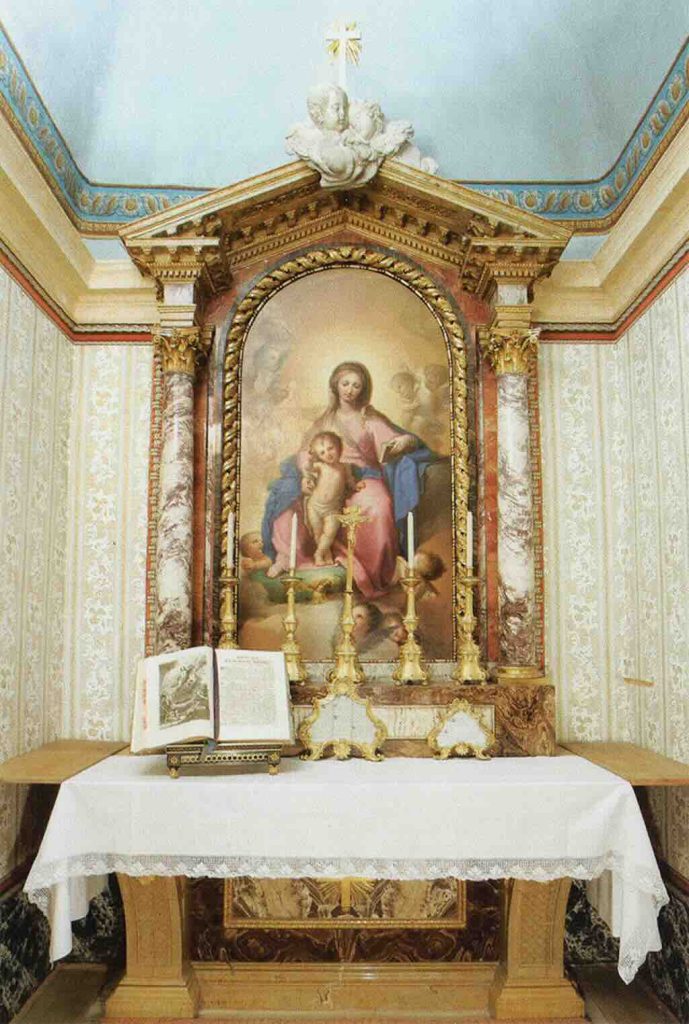
There is much confusion on the Web about the ‘Oratorio del la reina‘ but this particular room is the small Oratory of María Luisa (1751-1819), wife of Carlos IV. The altarpiece was designed by Juan de Villanueva, and the ‘The Virgin and Child’ by Francisco Bayeu y Subías.
Cámera del Rey
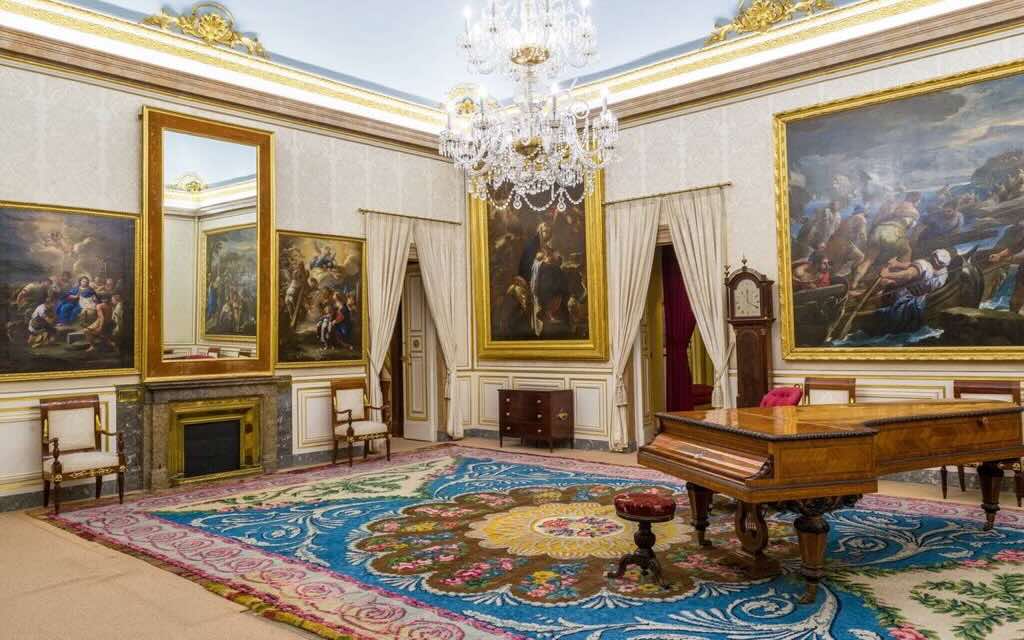
The king’s bedroom is presented today as a music room (‘pieza de música’), and stands out for its collection of pictures of Luca Giordano.
Comedor de gala
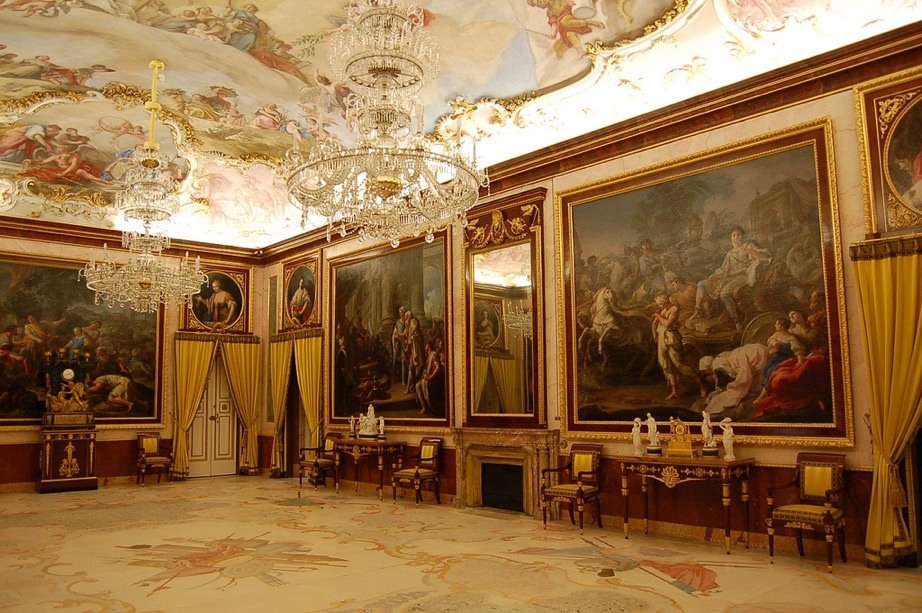
The gala dining room (‘Comedor de Gala‘) is also known as the ‘sala de conversación‘ of Fernando VI, whose reign corresponds to the decoration (1746-1759). This room is one of the few that did not burn in the fires of the 17th century. Its floor is made of stucco imitating marble, and is very fragile. It is for this reason that visitors are not allowed into the room.
Many of the rooms, which are now know with a certain name, had a different use in the past. Thus, what we now call the gala dinner room was a ‘conversation room’ under Fernando VI, until Carlos III gave it a new job. It is the room that best preserves the image of the Rococo Palace, since from the floor to the vaulted ceiling, the paintings by Corrado Giaquinto (1703-1766) were expressly intended for this room. Everything obeys a decorative program and the same late-Baroque spirit.
Gabinete Árabe
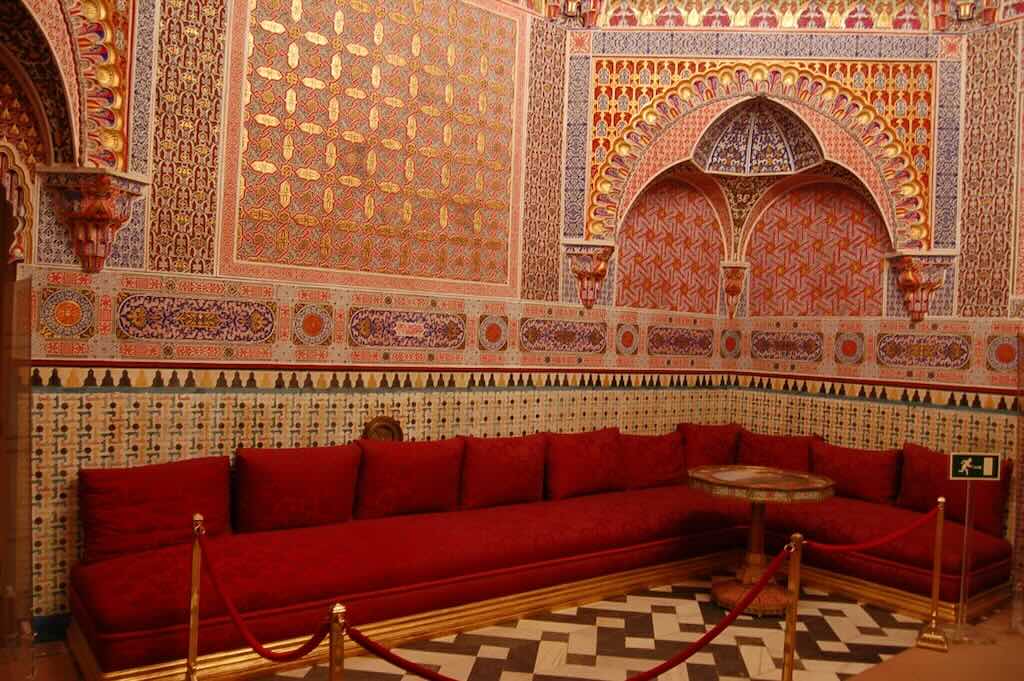
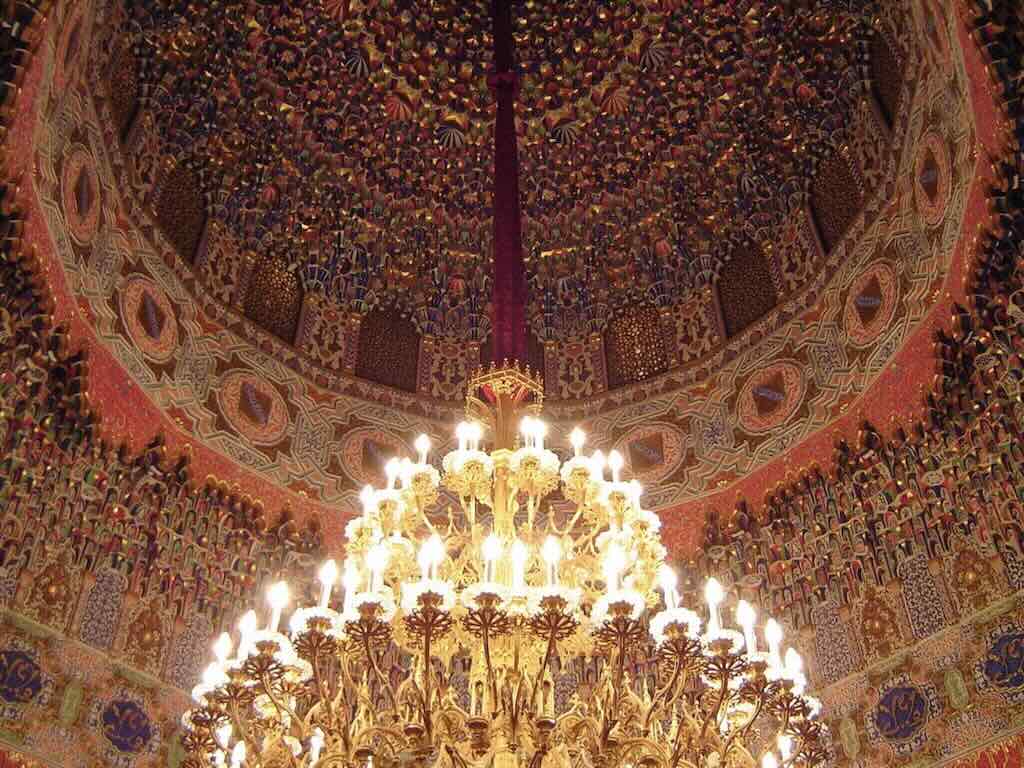
It is said that Contreras tried to reproduce the supposed original polychromy in the Alhambra. However experts suggest that it is more a show of the historicist taste of the mid-19th century. And some have even said that “no se acerca siquiera a la genialidad de los artistas nazaríes“, that it does not compare well with the ‘genius’ of the original Nasrid artists.
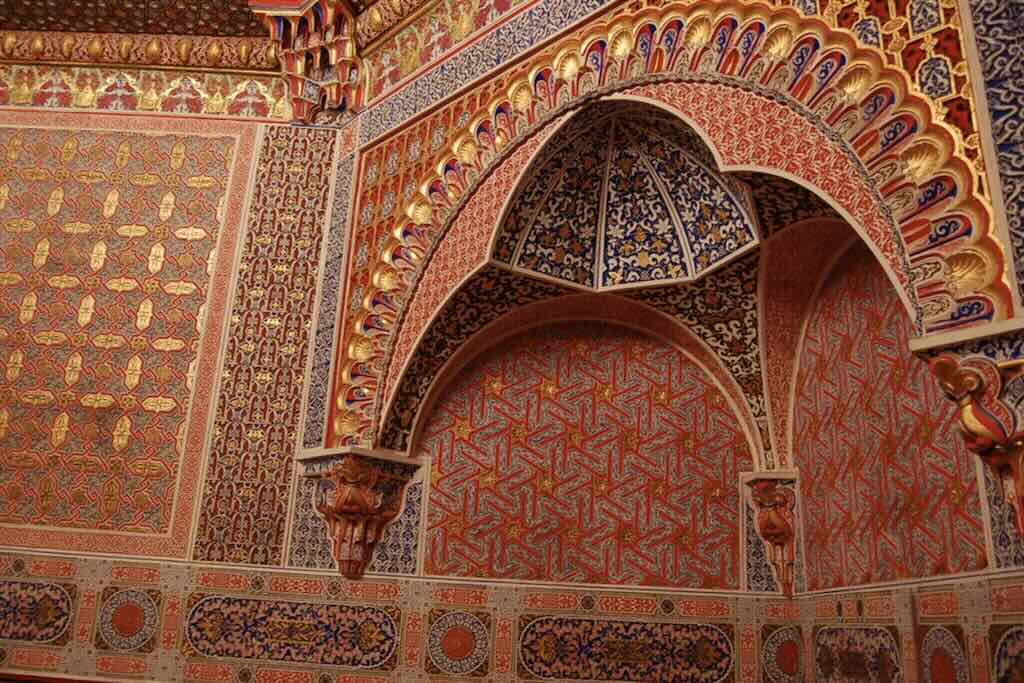
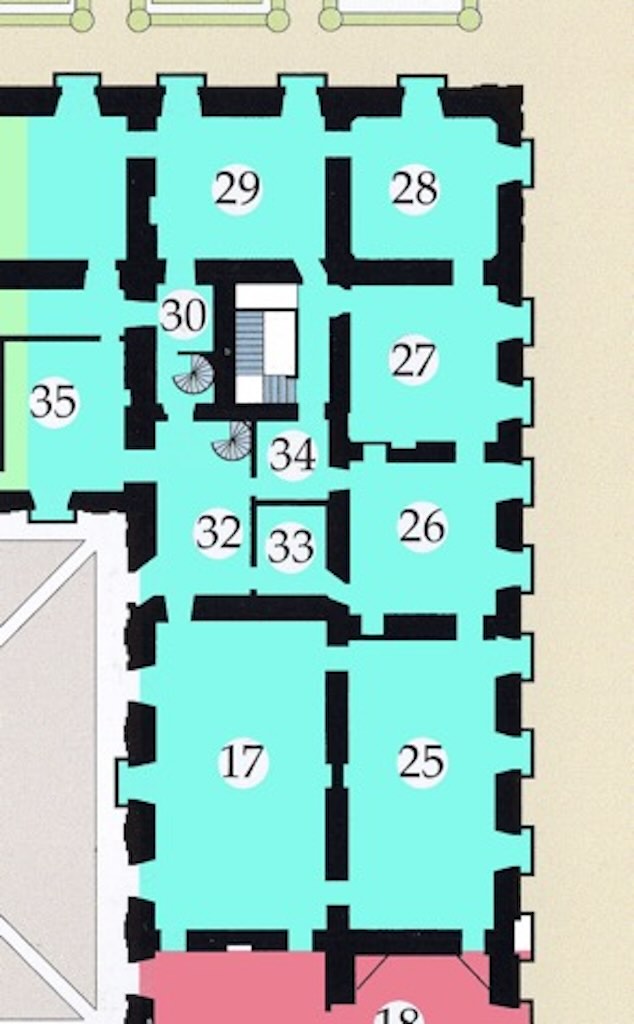

Salón de Baile
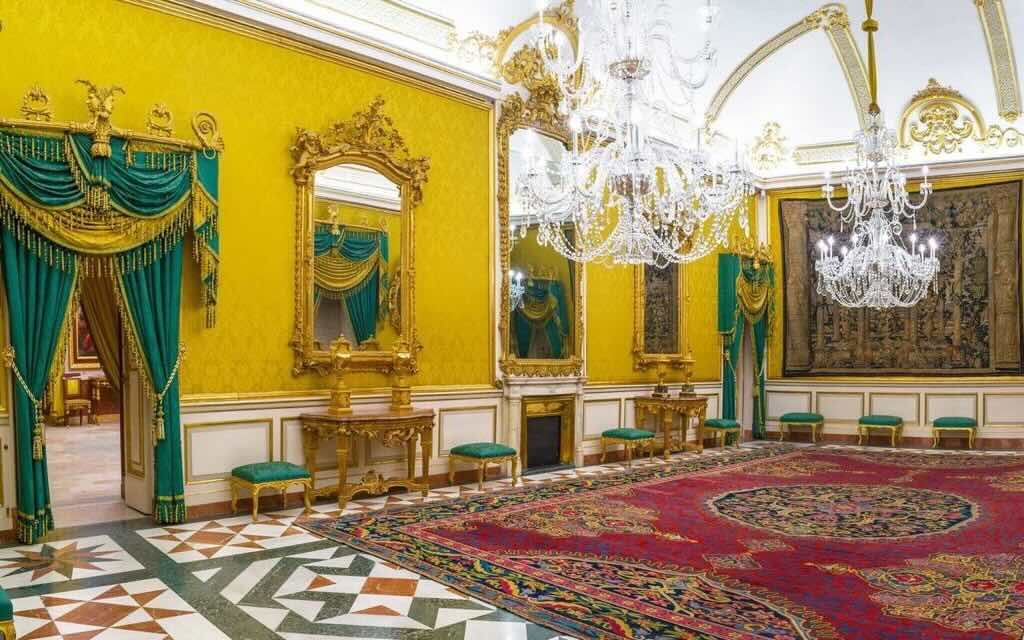
The Ballroom is sometimes called the Yellow Room ‘Salón Amarillo’ or even ‘Salón de Recepciones’. The room is the central point of the palace and is located between the rooms of Isabel II and her husband. It was redecorated in the time of Isabel II with mirrors in carved frames, divans, consoles, etc. The furnishings today are in the Elizabethan style but date from the late-19th century, since the original furniture disappeared in a fire at the end of the century.
Tocador de la reina

The Queen’s dressing room, decorated to Victorian taste, remains as it was after the decorative campaign of 1850-52.
Dormitorio de la reina
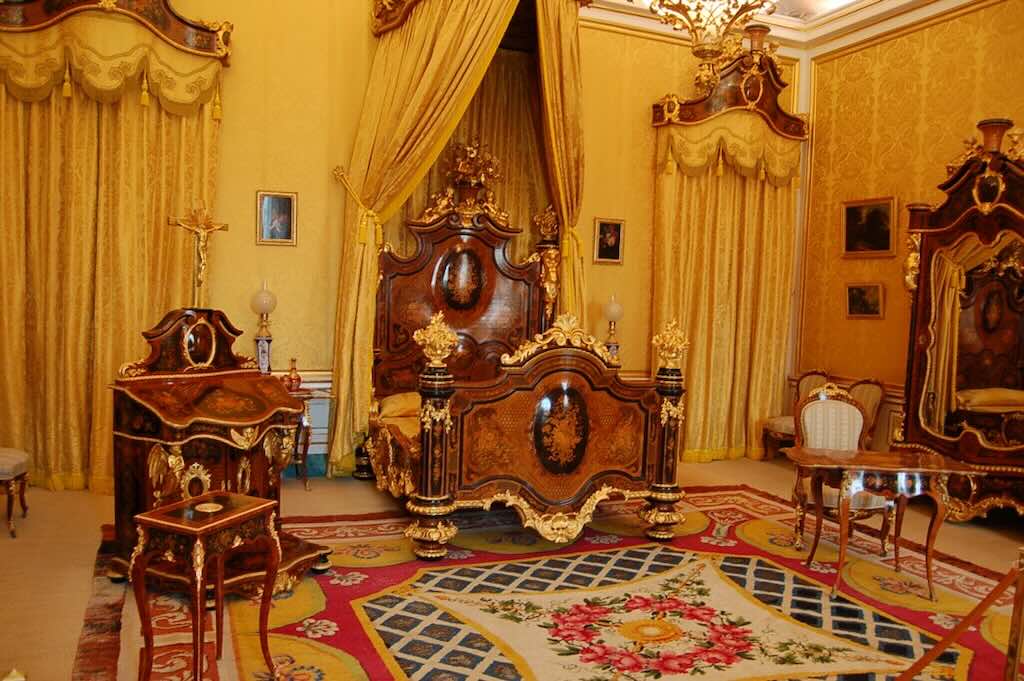
The Queen Bedroom, is home to furniture of the style Second French Empire (1852-1870) with its rich marquetry.
Gabinete de Porcelana
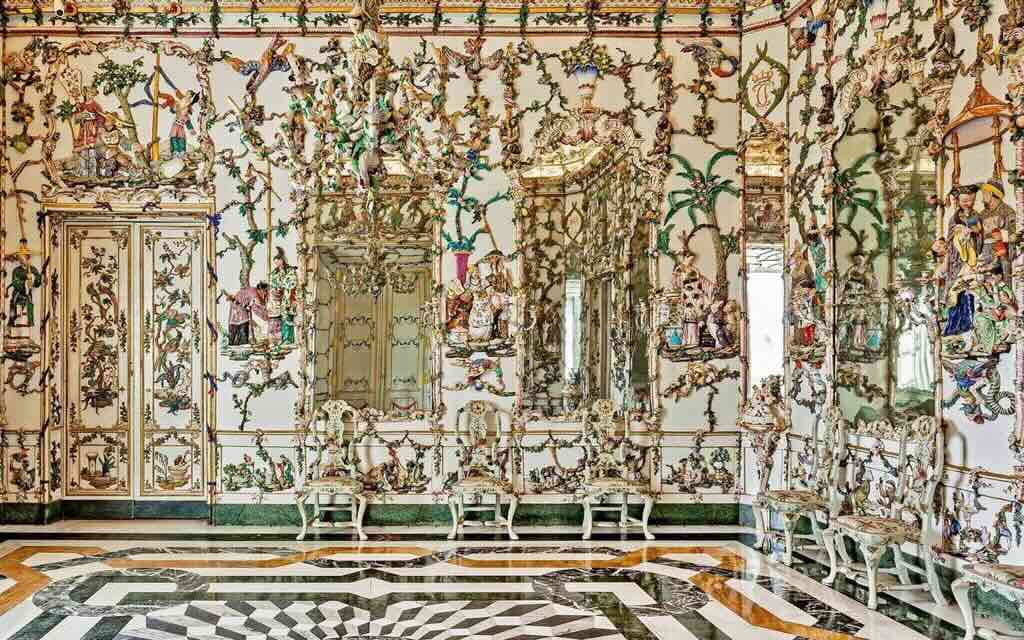
The so called ‘Porcelain Cabinet’ is, as you can see, an exceptional room that occupies the corner of the floor. Originally, this was the office of Isabel Farnesio (1692-1766), wife of Felipe V, but only the splendid marble floor remains. Her son Carlos III transformed it into a ‘sala de la conversación‘, sumptuously decorated in porcelain from the ‘Real Fábrica de Porcelana del Buen Retiro‘. It was completed in 1763 by Giuseppe Gricci (1720-1771), who brought the best materials and ceramics from Capodimonte.
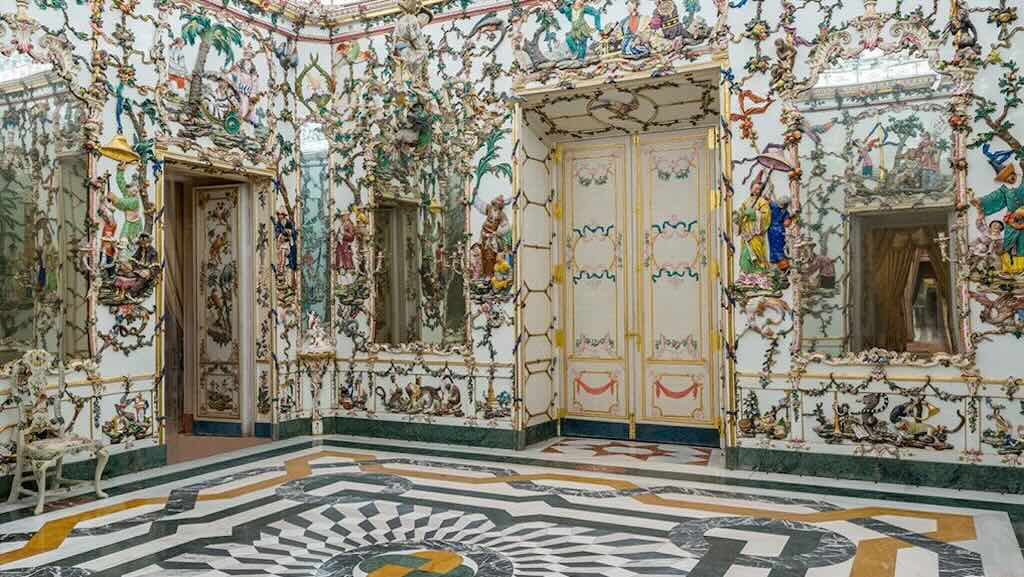
The room is of medium size but is completely covered with white porcelain plates and reliefs with Rococo decoration with Chinese motifs (garlands of flowers, fruits, monkeys, vases, mandarins, parrots, samurai, birds and dragons). The ceramic plates are fixed to the wooden walls by screws. The floor is marble. Eight large mirrors attached to the walls exert a multiplying effect on the decorative madness. The room was used for games and as a recreation room.

The variegated ‘chinoiserie‘ decoration is a little excessive for current tastes, but to get a complete appreciation it is best to focus on a small area and study just a few individual items fixed to the walls.
The Porcelain Cabinet is, without a doubt, the most singular work in the whole building, and an example of the interest of the 18th century for anything oriental. ‘Chinoiserie‘, was seen as extravagant and striking in contrast to Western culture and taste.
The story goes that the work was commissioned in 1760. It is said that Carlos III ordered an imitation of a room he had left in Capodimonte, in the kingdom of Naples. He brought in modellers and technicians, such as Giuseppe Gricci, who completed the work in 1765. They then started on the Porcelain Room in the Royal Palace of Madrid.
It’s worth mentioning that today a single early piece modelled by Giuseppe Gricci can cost in excess of €10,000.
Despacho de la reina
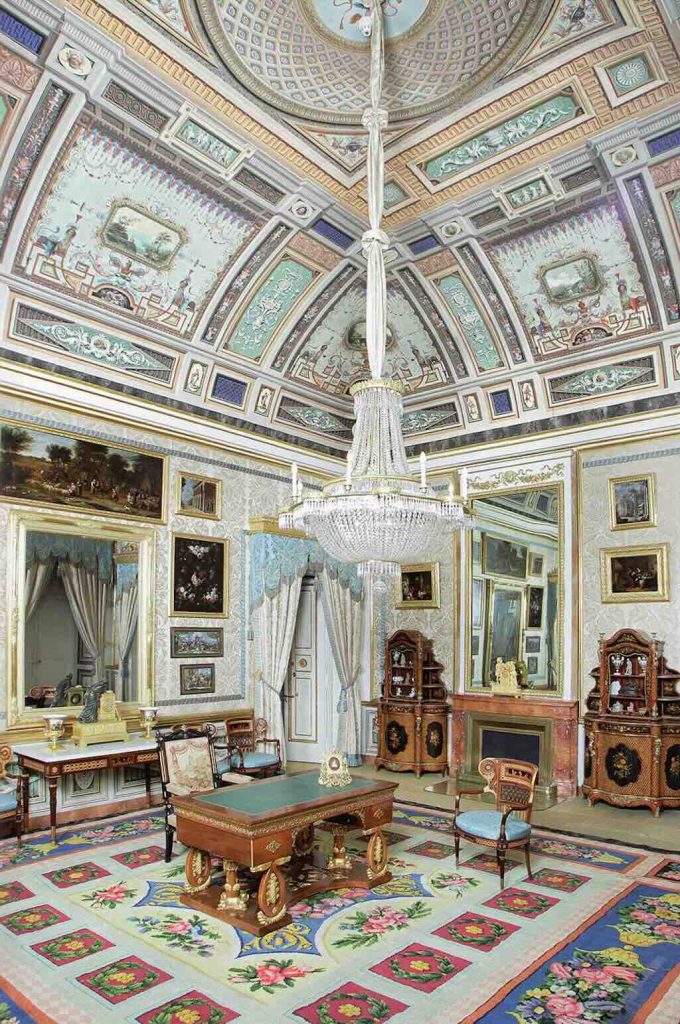
This is the ‘Queen’s Office’, although it may have previously been used as a dressing room or bedroom. The vault is frescoed in the Pompeian style by Mariano Salvador Maella Pérez (1739-1819) with scenes of the Passion of Christ.
Oratorio pequeño o Reclinatorio de Carlos IV

Salón de Embajadores o del Trono
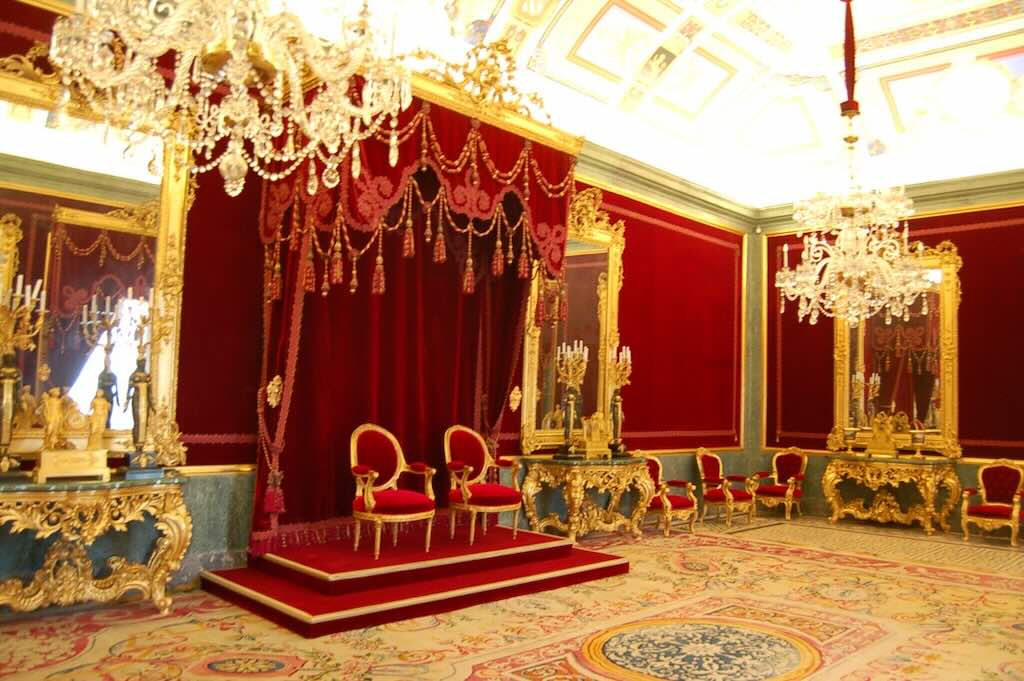
This room is either called the ‘Throne Room’ or ‘Hall of the Ambassadors’, but it was also the old dining room of Carlos IV. In this hall the kings received the protocol visits. The walls are upholstered with red velvet.
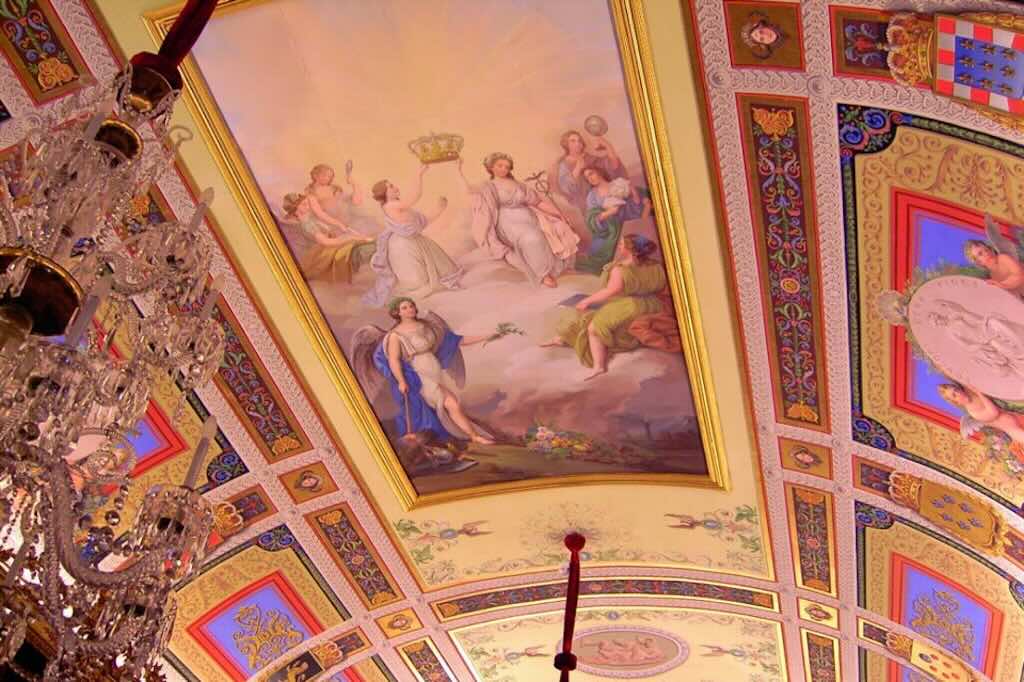
It has a vaulted ceiling decorated in the allegorical style of the 19th century, which has been attributed to Vicente Camarón Torra (1803-1864). Completed in 1851 it represents the Monarchy whose symbol, the Royal Crown, is supported by the figures of Venus and Industry.

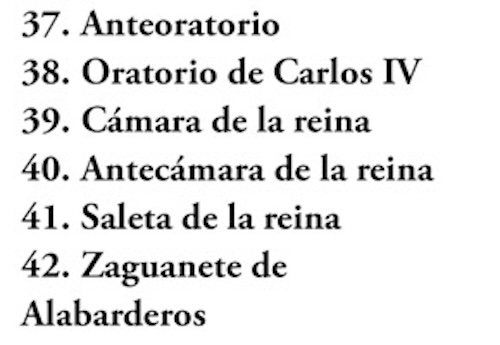
Anteoratorio
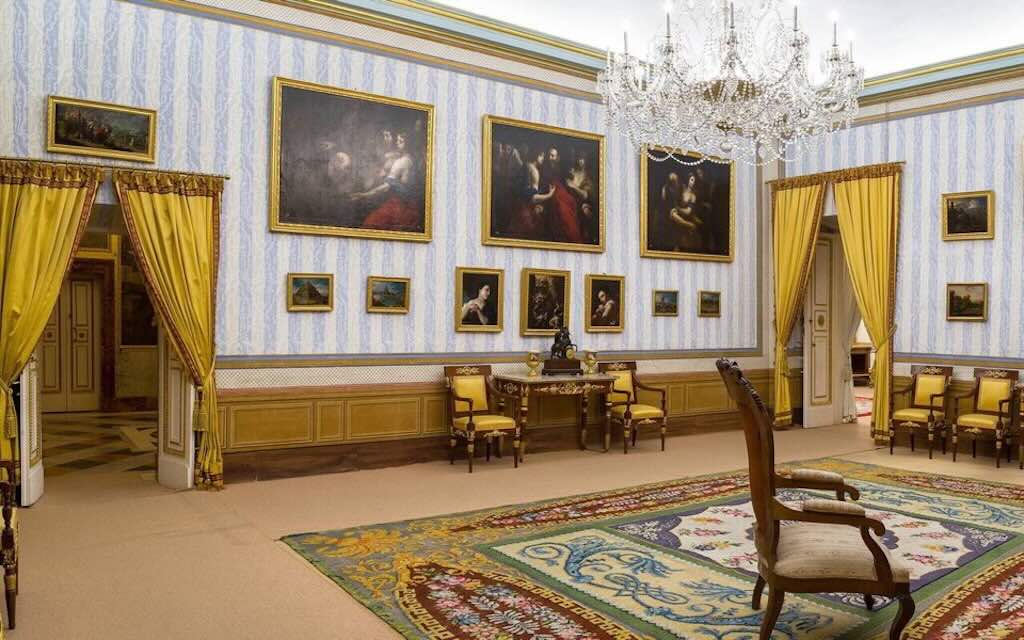
The ‘anteoratorio‘ is a kind of lobby or anti-chamber to the ‘oratorio‘ or private chapel.
Oratorio de Carlos IV

Sometime called the Oratory of Charles IV and sometime called the Queen’s Oratory (‘Oratorio de la reina‘). Rebuilt by Juan de Villanueva (1739-1811) for Carlos IV. Decorated with stuccos, on its walls the frescoes were painted around 1791 by Francisco Bayeu y Subías (1734-1795), brother-in-law of Goya.
Cámara de la reina
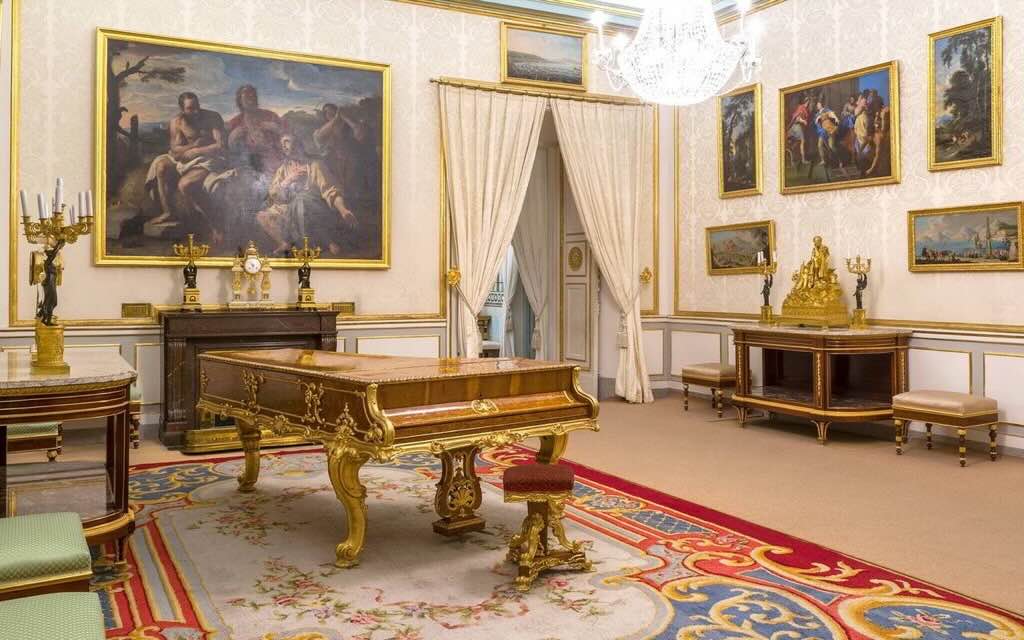
The Queen’s Bedroom is today presented as music room, and is now home to a Collard & Collard piano from 1849 that was originally in the porcelain room. The rooms decoration and layout is more or less identical to the King’s Room.
Antecámera de la reina

The Antechamber of the Queen, was a kind of waiting room for those people wanting to talk to the Queen. In my opinion it is one of the most pleasant rooms in the palacio. The walking visit is actually in the opposite direction to the route that would normally be taken by a visitor. The walking visit is confusing because rooms are interconnected so each room implied an additional degree of privileged access to the king or queen, going from the guards rooms, to the antechamber, then the sitting room, and finally the bedroom.
Saleta de la reina

This is the Saleta de la Reina, which could mean anything from just a small room or parlour through to a sitting room or reception. In the time of Charles IV it was part of the king’s rooms, and was where nobles could remain with their hats and headdresses even in front of the king.
Zaguanete de Alabarderos
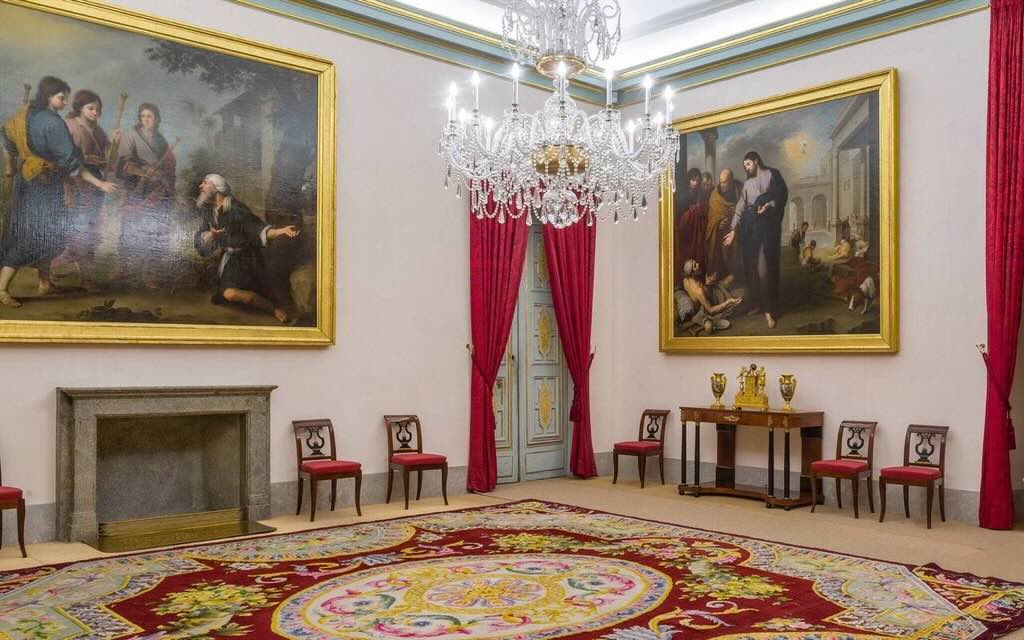
The Zaguanate de Alabarderos, is the Queen’s guardroom. It’s decorated with paintings by Luca Giordano, furniture in olive and bronze, and a collection of maps of Carlos IV. In almost all the rooms of the palace it is easy to find watches of all sizes and characteristics, since King Charles IV was fond of watchmaking and in addition to building watches, he repaired and collected them.
This is the end of the visit.
References
Patrimonio Nacional – Palacio Real de Aranjuez
Aranjuez, web de turismo y ocio
Aranjuez Cultural Landscape, Spain
El Palacio Real de Aranjuez y su Historia
La Casa de Oficios de Aranjuez, Gema Muñoz Garcinuño
Pequeños Parques y Parterres de Tipo Urbano, including an extensive article on the Jardín del Parterre de Aranjuez
Aranjuez, Sitio Real y Paisaje Cultural, José-Luis García Grinda
Web Fotográfica Del Real Sitio y Villa de Aranjuez, José Juan de Oro Durán
Audio Guía Teatralizada de Aranjuez, Audioguias Bluehertz, includes 178 mp3 audio tracts on everything from the Palacio Real, through la Fuente de Ceres, and to la Plaza de Toros
Aranjuez, Urbanismo y Arquitectura en el Paisaje, Magdalena Merlos Romero
Los Planos de los Sitios Reales Españoles Formados por la Junta General de Estadística (1861-1869), Luis Urteaga y Concepción Camarero Bullón
Pasión por Madrid, a blog that ran from 2010 to 2015
Aranjuez II – Historia del Real Sitio, Jorge Peñalver López, and the blog historiaenestudio
djaa – Solo cultura, Valencia y Benimàmet, looks to be a personal blog, but has some interesting webpages, including one on the Palacio Real de Aranjuez
Huertas de Picotajo en Aranjuez, looks to be a webpage on the blog of Pilar Álamo that ran from 2008 to 2016
Paseos Arbolados de los Sotos Históricos de Aranjuez
Descripcion Histórica Del Real Bosque y Casa de Aranjuez, Juan Antonio Álvarez de Quindós y Baena



